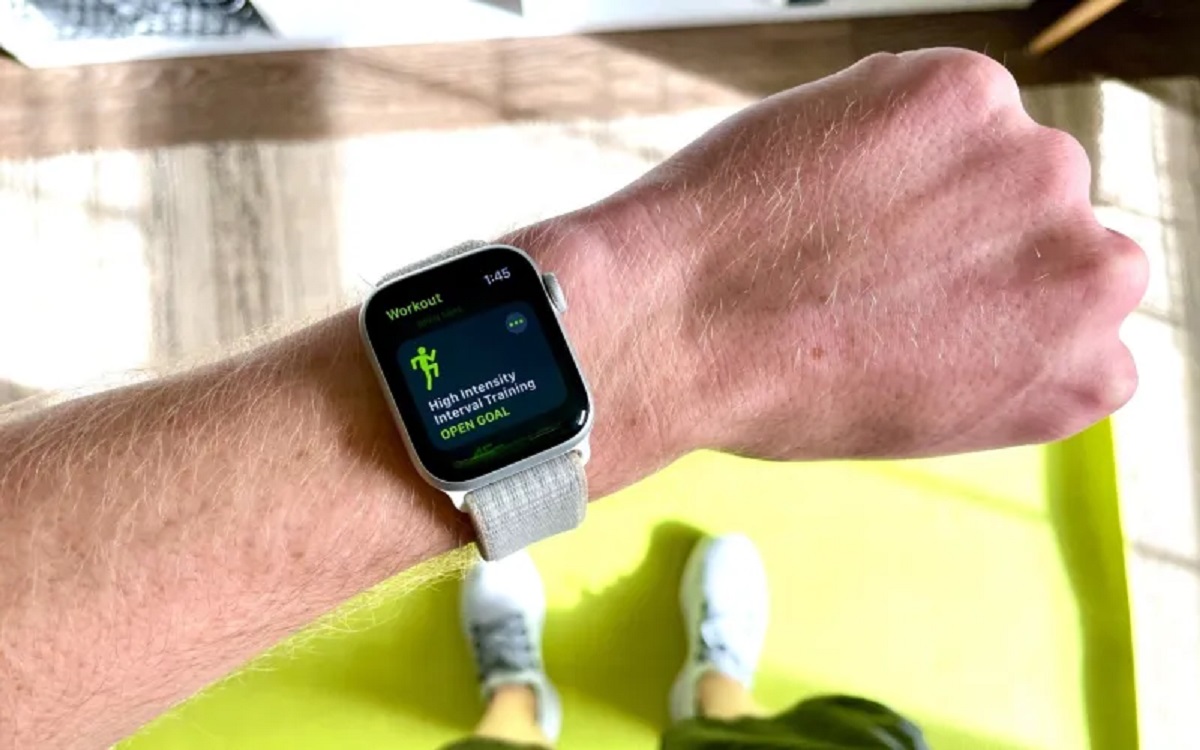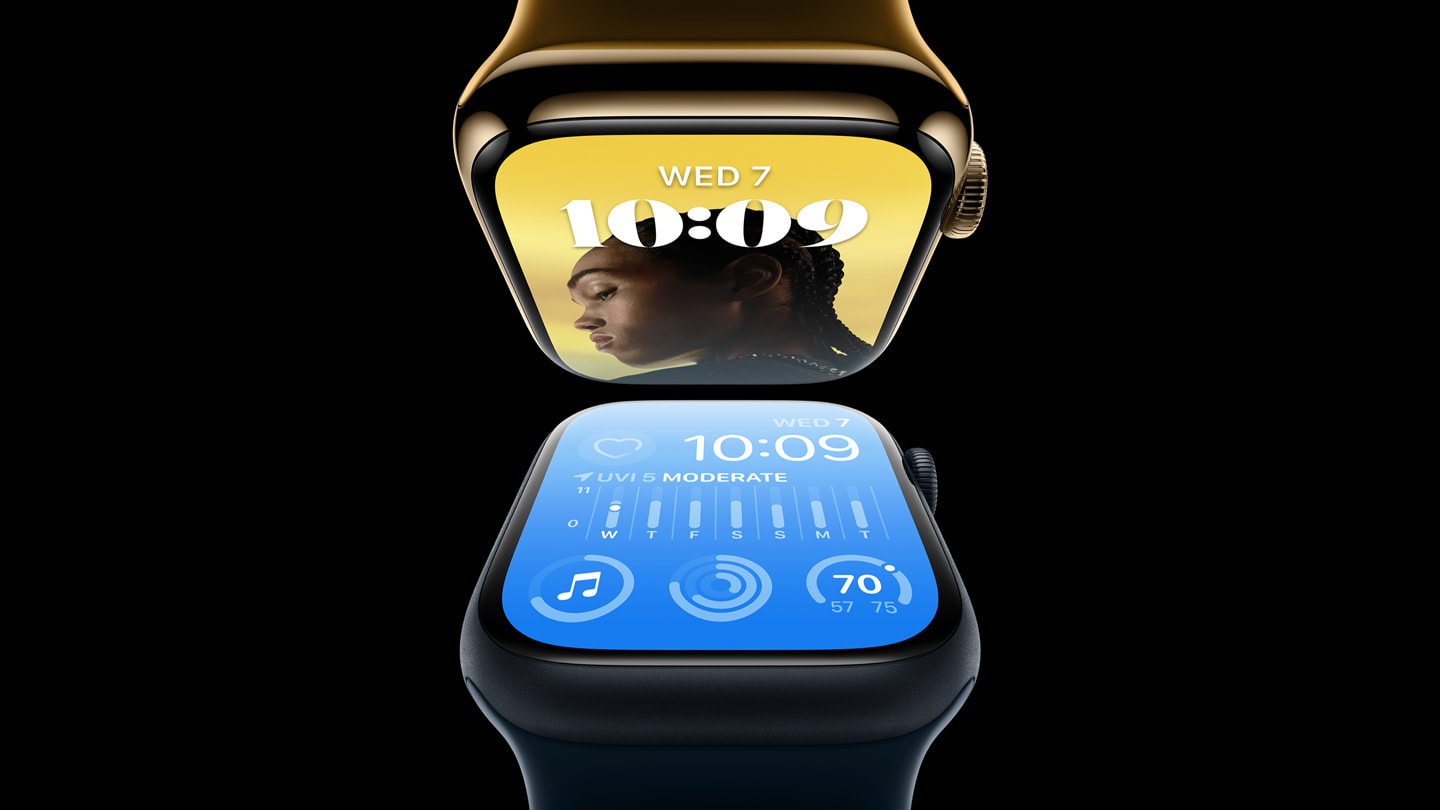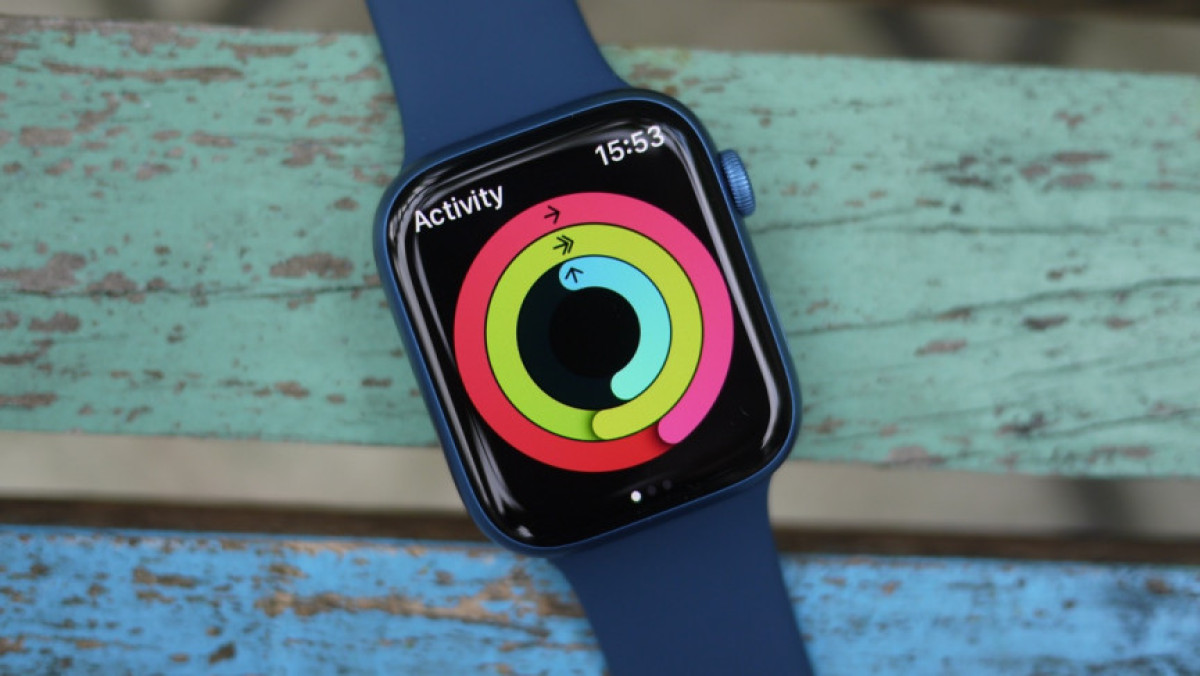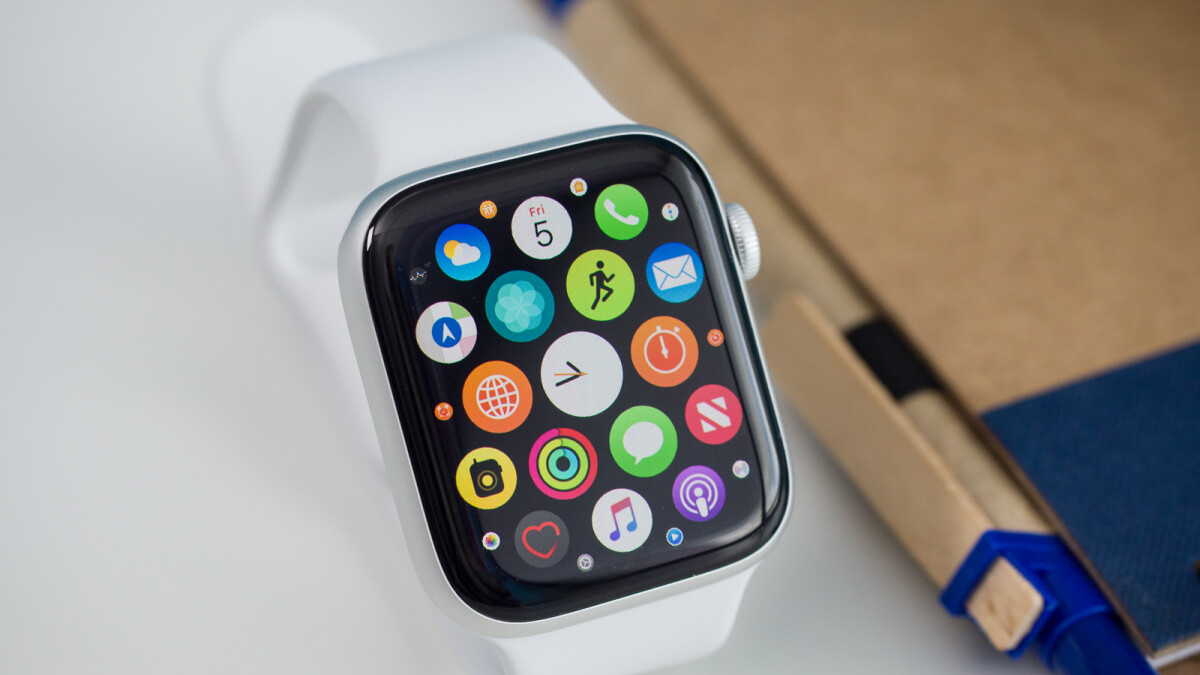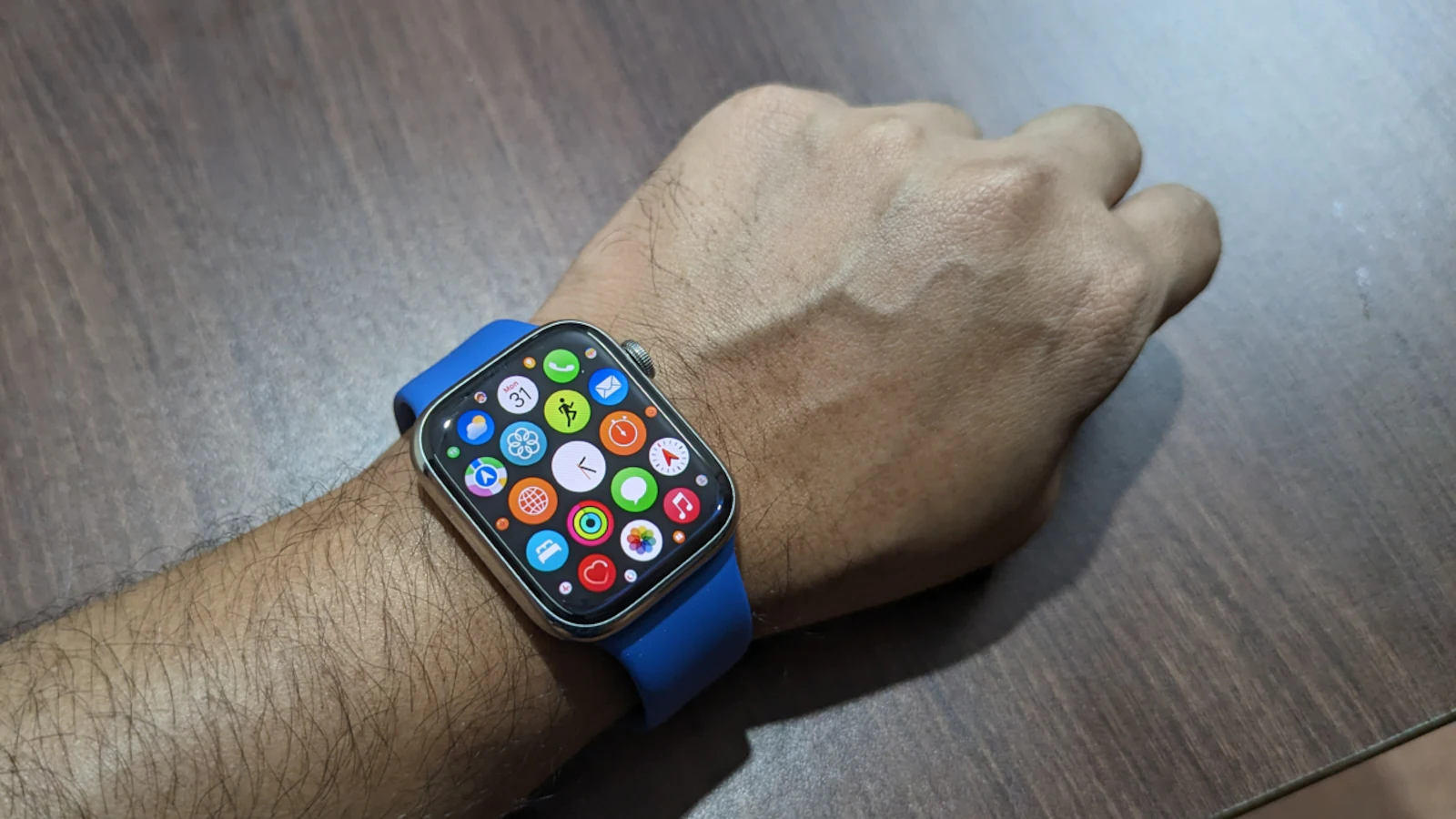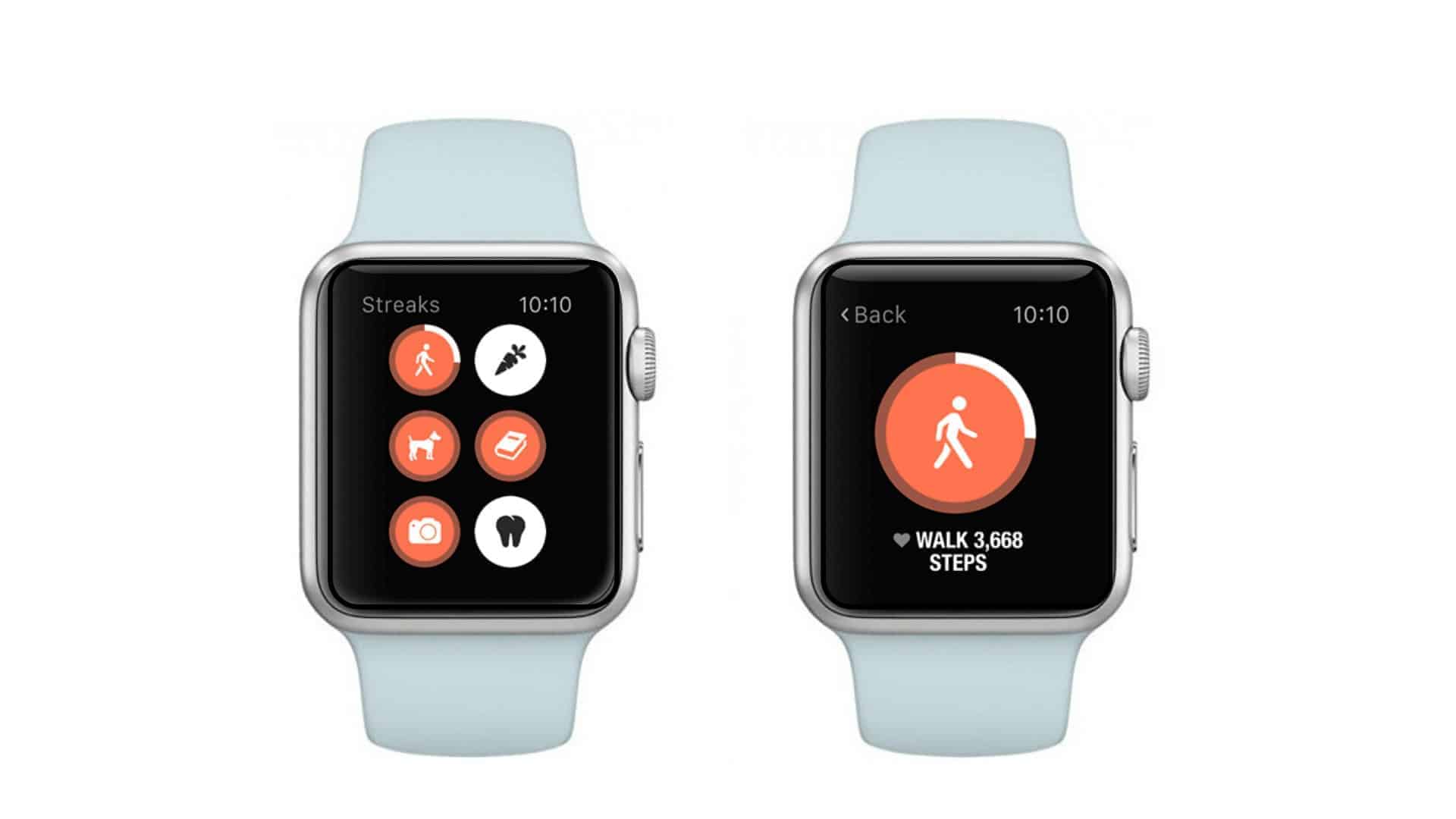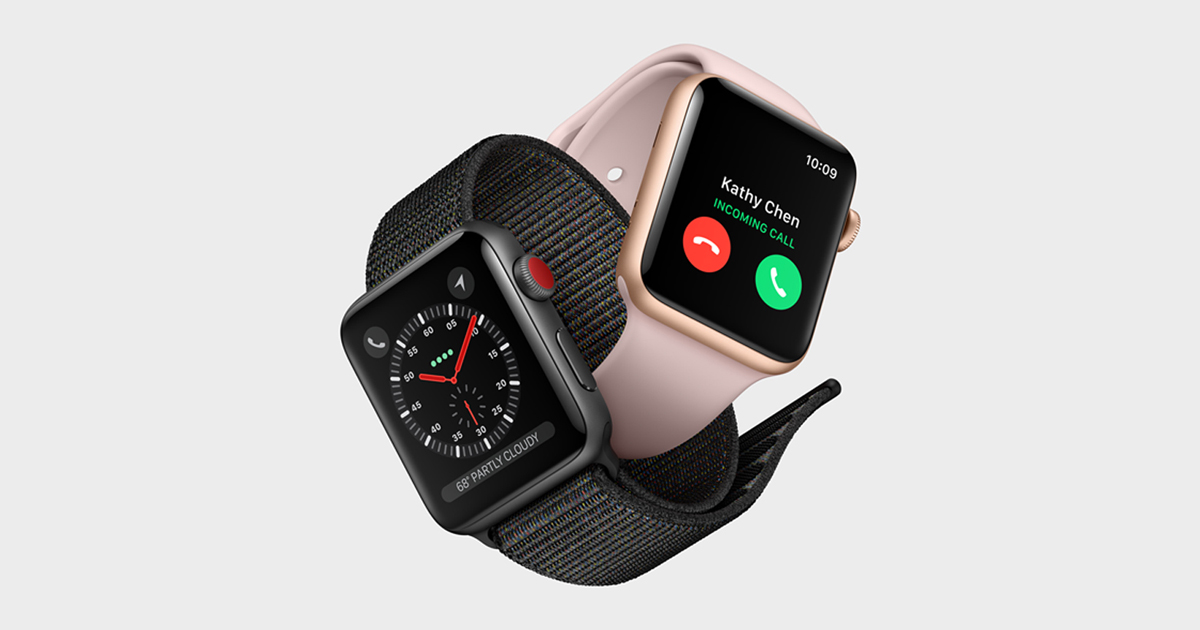Introduction
The Apple Watch is a versatile device that offers a wide range of features, including a built-in Workout app. This app allows you to track and record various types of workouts, such as running, cycling, swimming, and more. While the app comes with default settings for each workout, you may find the need to make some adjustments to better suit your preferences or specific goals.
Editing a workout on the Apple Watch is a simple and straightforward process that can be done right on your wrist. Whether you want to customize the metrics displayed during your workout, set a specific goal or duration, enable audio cues, or make any other modifications, the Workout app gives you the flexibility to tailor your workout experience to your liking.
In this guide, we will walk you through the steps to edit a workout on your Apple Watch. Whether you are a beginner just starting with fitness tracking or a seasoned athlete looking to enhance your training sessions, these instructions will help you make the most out of your workouts and achieve your fitness goals.
So, let’s dive into the world of workout customization and explore the various options to edit your workouts on the Apple Watch.
Step 1: Open the Apple Watch Workout app
To begin editing a workout on your Apple Watch, you first need to open the Workout app. You can easily access it from your watch’s home screen by tapping on the Workout icon, which resembles a green running figure.
If you can’t find the Workout app on your home screen, don’t worry. You can also use the search feature on your Apple Watch. Simply swipe down on the watch face to reveal the search bar and use the dictation, scribble, or voice assistant feature to search for “Workout.”
Once you locate the Workout app, tap on it to open it. The app will launch, displaying various workout types that you can choose from, such as Outdoor Run, Indoor Cycling, Pool Swim, and many more. The available options will depend on the activities you’ve done in the past and the compatibility of your Apple Watch model.
Alternatively, you can also start a workout directly from the watch face by using the Siri watch face or a workout complication. Simply raise your wrist and say “Start [workout type]” or tap on the complication icon, if available, to initiate the workout.
The Workout app allows you to track a wide range of activities, including running, walking, swimming, cycling, and even high-intensity interval training. It provides real-time data and metrics, such as distance, pace, heart rate, calories burned, and more, to help you monitor your progress and make the necessary adjustments to your workout.
Now that you have opened the Workout app, you are ready to proceed to the next step and choose the specific workout you want to edit.
Step 2: Choose the workout you want to edit
Once you have opened the Apple Watch Workout app, you’ll see a list of available workout types. Scroll through the options and select the specific workout you want to edit.
The workout types displayed on your Apple Watch will depend on the activities you’ve previously tracked. If you don’t see the workout you want to edit in the list, don’t worry. You can add it to your watch by tracking it at least once using the iPhone’s Workout app.
For example, if you want to edit your recent outdoor run, tap on the “Outdoor Run” option. If you prefer to modify your swimming workout, select “Pool swim.” The available options may also include indoor cycling, hiking, yoga, elliptical, and more.
After choosing the workout type, the app will display a summary screen with details like duration, distance, heart rate, and calories burned from your previous workouts. If you haven’t completed any workouts of that type yet, it will simply show a blank summary screen.
By selecting a specific workout type, you are indicating that you want to edit the settings and preferences for that particular activity. This allows you to tailor the metrics, goals, and alerts to suit your specific needs.
Remember, each workout type may have different customization options available. For example, you can set a specific distance goal for running or adjust the resistance level during an indoor cycling session. Explore the available options to tailor your workout experience.
Now that you have chosen the workout type, let’s move on to the next step and learn how to edit the workout details on your Apple Watch.
Step 3: Tap on “Edit”
Once you have selected the workout type you want to edit in the Apple Watch Workout app, you’ll see the summary screen displaying details of your previous workouts or a blank screen if you haven’t completed any workouts of that type yet.
To begin editing the workout, tap on the “Edit” button, which is usually located at the bottom right corner of the screen. This will take you to the customization options for the selected workout type.
By tapping on “Edit,” you are essentially accessing the settings and preferences that allow you to modify various aspects of your workout. This includes changing the goal or duration, adjusting the metrics displayed during the workout, enabling or disabling alerts, and more.
After tapping on “Edit,” you’ll be presented with a screen that shows the available customization options for the selected workout type. Depending on the workout, you may see different options like goal, duration, pace, distance, calories, heart rate, audio cues, and more.
Keep in mind that not all customization options will be available for every workout type. For example, you may have the option to set a distance goal for running, but this may not be applicable for activities like swimming.
Now that you have tapped on “Edit” and entered the customization screen, you are ready to move on to the next step and start customizing the workout details to suit your preferences and goals.
Step 4: Customize the workout details
After tapping on “Edit” in the Apple Watch Workout app, you’ll be presented with a screen that allows you to customize the details of your selected workout type. This step is where you can personalize the settings to align with your preferences and specific fitness goals.
First, assess the available customization options based on the selected workout type. Some common options include setting a goal, adjusting the duration, selecting a specific distance, or determining the number of calories you want to burn during the workout.
For example, if you want to set a specific distance goal for your run, select the “Distance” option and enter the desired distance. Keep in mind that this option may not be available for all workout types, so adjust the settings accordingly.
In addition, you may have the option to adjust pacing preferences for certain activities. This allows you to monitor your pace during the workout and receive alerts if you straying from your desired pace.
If you prefer to focus on a specific heart rate zone during your workout, some activities may offer the option to set a target heart rate range. This allows you to optimize your training based on specific heart rate thresholds.
Furthermore, you can customize the metrics displayed during your workout. For instance, if you want to track your average speed or cadence, you can add these metrics to the list of displayed stats. Simply toggle the switch to enable or disable the specific metrics.
Remember to explore the available options and customize them according to your preferences and goals. The Workout app on your Apple Watch provides an array of customization features to enhance your workout experience.
Once you have made the desired changes, you can proceed to the next step and save your edited workout to ensure that these customizations are applied during your training session.
Step 5: Set workout goal or duration
One of the key customization options available when editing a workout on your Apple Watch is the ability to set a specific goal or duration for your training session. This step allows you to establish targets that align with your fitness goals and provide motivation during your workout.
To set a workout goal or duration, navigate to the customization screen of your selected workout type by tapping on “Edit” in the Apple Watch Workout app. Depending on the activity, you may see different options like goal, duration, distance, calories, and more.
If you prefer to set a specific goal, select the appropriate option based on your workout type. For example, runners may have the option to set a distance goal, while cyclists can set a goal for the duration of their ride.
For duration-based goals, you can enter the desired duration for your workout. This allows you to track your progress and receive alerts when you reach your target time.
If you have a specific distance in mind, input the distance goal that you want to achieve during your workout. This is useful for monitoring your progress and receiving updates on your distance covered.
Setting a workout goal provides a tangible target to work towards, helping to keep you motivated and focused during your training session. It can be a great tool for measuring progress and pushing yourself to achieve new milestones.
Alternatively, if you prefer not to set a specific goal, you can simply opt for a duration-based workout without a specific target. This allows you to track your workout based on time rather than a specific goal, providing flexibility and freedom during your training.
Once you have set your workout goal or duration, you can move on to the next step and continue customizing other aspects of your workout on your Apple Watch.
Step 6: Modify metrics display
In addition to setting workout goals and durations, another important aspect of editing a workout on your Apple Watch is the ability to modify the metrics displayed during your training session. This step allows you to customize the data that you want to monitor in real-time, ensuring that you have easy access to the information that matters most to you.
To modify the metrics display, access the customization screen of your chosen workout type by tapping on “Edit” in the Apple Watch Workout app. Once you are in the customization screen, you’ll find a list of available metrics that you can toggle on or off.
Depending on the activity and your specific preferences, the available metrics may include distance, pace, average speed, heart rate, calories burned, elapsed time, and more. Simply toggle the switch next to each metric to enable or disable it.
For example, if you want to track your heart rate during your workout, make sure the heart rate metric is enabled. If you’re focused on speed and distance, ensure that the appropriate metrics are active. You have the flexibility to choose the metrics that are most relevant to your training needs.
This customization feature allows you to personalize your workout experience by tailoring the displayed metrics to your specific goals and interests. Whether you’re aiming to improve your speed, monitor your heart rate zones, or track your calorie burn, adjusting the metrics display can provide valuable insights during your workout.
Keep in mind that the number of metrics you enable will affect the amount of information shown on your Apple Watch screen. Choose the ones that are most important to you and that you can easily glance at during your training session without being overwhelmed by excessive data.
Once you have modified the metrics display to your liking, you can proceed to the next step and continue customizing other aspects of your workout on your Apple Watch.
Step 7: Enable/disable alerts
When editing a workout on your Apple Watch, you have the option to enable or disable alerts, which can provide valuable notifications and reminders during your training session. These alerts can help you stay on track, maintain proper form, and achieve your fitness goals.
To enable or disable alerts, access the customization screen of your selected workout type by tapping on “Edit” in the Apple Watch Workout app. Within the customization screen, you’ll find a section dedicated to alerts.
In this section, you’ll have the ability to toggle various types of alerts on or off, depending on the workout type and your preferences. Common types of alerts include time, distance, calorie, heart rate, pace, and more.
For example, if you want to receive a notification when you complete a certain distance during your run, make sure the distance alert is enabled. This alert will notify you when you reach the specified distance, allowing you to track your progress and stay motivated.
If you prefer to monitor your heart rate zones during your training, enable the heart rate alert. This alert will notify you when your heart rate exceeds or falls below a defined range, helping you optimize your exercise intensity.
Enabling alerts can provide you with timely feedback and motivate you to push harder or maintain a specific pace. They serve as a helpful tool to keep you engaged and focused during your workout.
On the other hand, if you prefer a distraction-free workout experience, you can choose to disable all alerts. This allows you to solely focus on your exercise without any interruptions. However, please note that disabling alerts means you won’t receive any notifications or reminders during your session.
Once you have enabled or disabled the necessary alerts for your workout, you can move on to the next step and make additional customizations as desired.
Step 8: Adjust audio cues settings
In addition to visual alerts, the Apple Watch Workout app also offers audio cues to provide you with real-time information and updates during your training session. These audio cues can be particularly helpful when you prefer to receive audible feedback rather than constantly checking the watch face.
To adjust the audio cues settings, access the customization screen of your chosen workout type by tapping on “Edit” in the Apple Watch Workout app. Within the customization screen, you’ll find an option for audio cues.
When you tap on the audio cues option, you’ll discover a range of settings that you can modify to suit your preferences. These settings may include options like distance updates, pace announcements, lap alerts, and more.
For example, if you want to receive audio cues indicating your distance at regular intervals, enable the distance updates. This will provide you with periodic updates on the distance covered during your workout.
If you prefer to receive pace announcements, enable this setting to receive audio cues that indicate your current pace. This can be beneficial for maintaining a consistent pace or meeting specific training targets.
In addition to distance and pace, you may have the option to enable lap alerts. This setting will provide an audio cue each time you complete a lap, allowing you to track your progress and divide your workout into manageable sections.
Adjusting the audio cues settings can enhance your workout experience by providing you with helpful audio feedback without the need to glance at your watch frequently. It keeps you informed and motivated while allowing you to focus on your movements and form.
Remember to choose the audio cues settings that align with your training goals and preferences. Once you have made the necessary adjustments, you can proceed to the final step and save your edited workout settings.
Step 9: Save your edited workout
After you have made all the desired customizations to your workout on the Apple Watch, the final step is to save your edited settings. Saving ensures that your modifications are applied during your training session and that you can easily access them in the future.
To save your edited workout, navigate to the customization screen of your chosen workout type by tapping on “Edit” in the Apple Watch Workout app. Once you have made all the necessary adjustments to your goals, metrics, alerts, and audio cues, simply navigate back to the main screen or press the digital crown to exit the customization menu.
Upon exiting the customization screen, the Apple Watch will automatically save your changes, and you will return to the main Workout app screen. The next time you select the edited workout type, your customizations will be applied, and the app will track your workout according to the modified settings.
It is essential to save your edited workout settings to ensure that you have a streamlined and personalized exercise experience. By saving your modifications, you can easily access the customized settings each time you engage in that specific workout type without the need to make changes repeatedly.
Additionally, saving your edited workout allows you to track your progress over time accurately. The Apple Watch retains the saved settings and records your workout data, enabling you to review your performance, set new goals, and continually improve your fitness level.
Now that you have saved your edited workout settings, you are ready to start your training session with all the customized features and preferences that align with your unique fitness journey.
Conclusion
Editing a workout on your Apple Watch allows you to personalize your fitness tracking experience, ensuring that it aligns with your specific goals and preferences. By following the simple steps outlined in this guide, you can easily customize metrics, set workout goals, enable or disable alerts, adjust audio cues, and save your edited settings for future workouts.
The ability to tailor your workout on the Apple Watch empowers you to track your progress accurately and stay motivated throughout your training sessions. Whether you’re an avid runner, cyclist, swimmer, or engaged in any other physical activity, these customization options allow you to make the most out of your workout experience.
Remember, each adjustment you make should be based on your individual needs and fitness goals. Whether you want to track specific metrics, set distance or duration goals, or receive audio cues and alerts, the Apple Watch Workout app provides you with the flexibility to customize each aspect.
By taking advantage of these customization options, you can maximize your performance, monitor your progress, and make informed training decisions. With every workout, you have the opportunity to push yourself further and achieve new milestones.
So, next time you strap on your Apple Watch and open the Workout app, take a moment to edit your workout settings. Tailor them to your liking and embark on a fitness journey that is truly unique to you. Your Apple Watch will be there to track your every move and help you reach new heights in your fitness endeavors.
Now, go out there and make every workout count!










